NIL is the new Power Five
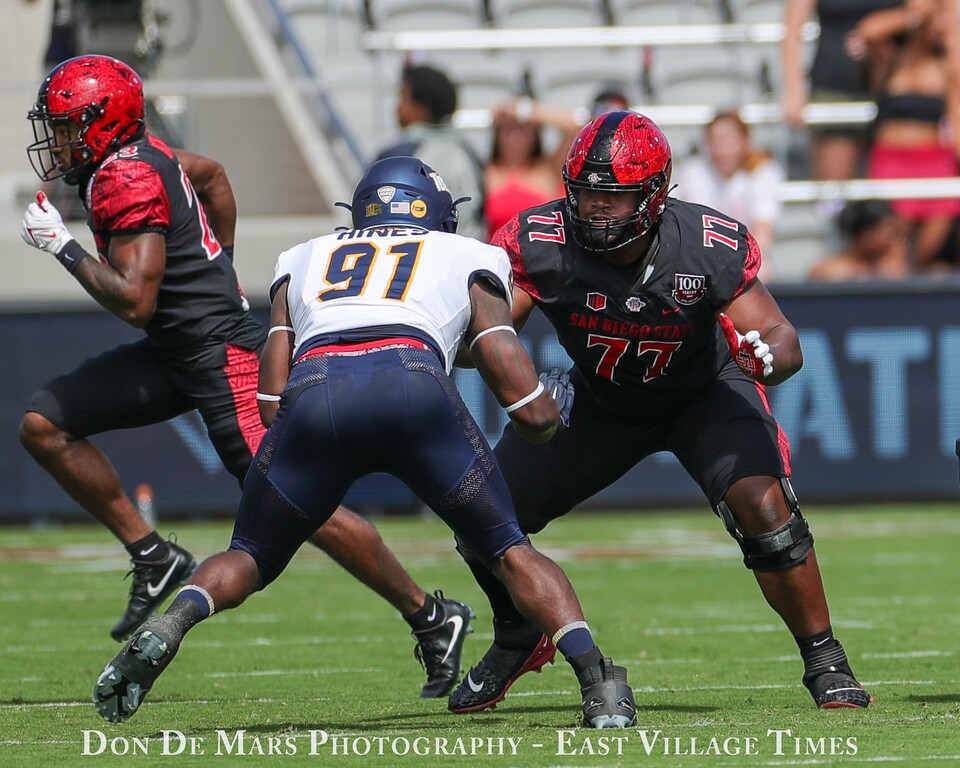
Josh Simmons blocks against Toledo. (Don De Mars/EVT)
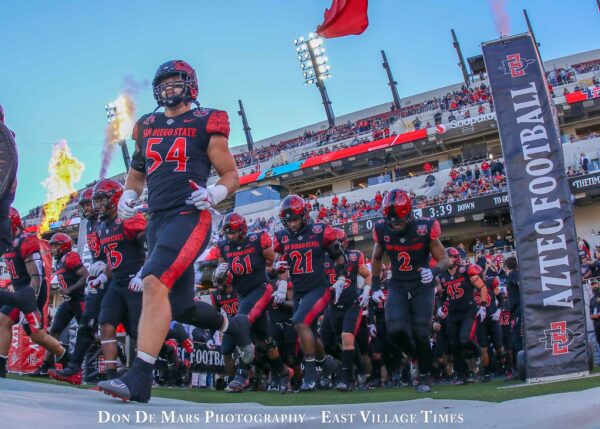
San Diego State is on the brink of a Pac-12 invitation. Publicly, the university cautions that no agreement has been finalized. Behind the scenes, it has been acting for some time like it is a foregone conclusion.
Predictions of what that ascension will mean for the program are everywhere. Prognostications usually center on whether the highest-rated recruits, particularly those from San Diego, will find SDSU more attractive in a better conference.
A more compelling question is whether the Aztecs should recruit such athletes in the first place.
There has always been dividing lines in college football. Schools used to be separated by program prestige, NFL development, and academics. Less than two years ago, Name, Image, and Likeness (NIL) joined the trio. It is threatening to supplant the others as the preeminent factor.
As things presently stand, unless they can attract a freshman without NIL money who can come in and be a star right away, the Aztecs might be better served focusing their recruiting attention away from four and five-star recruits.
“At the end of the day, you’ve got to keep up with the times,” JR Tolver, the CEO of Aztecs Link, SDSU’s NIL Collective, said in November on Episode 51 of The SDSU Football Podcast. “I love our leadership over at San Diego State. … (JD Wicker is) trying to stay out in front. But, at the end of the day, the school can only do so much.”
Programs without lucrative NIL opportunities risk becoming de facto minor league teams for schools that do. Savvy high schoolers, who miss out on top dollars as prep athletes, could select a team, earn early playing time, and then use the one-time transfer to market themselves again.
Focusing on established players to lavish NIL deals makes sense because it mitigates the risk of giving money to high schoolers. Even those with five-star resumes are less predictable than athletes who have a track record of success at the Division I level.
If SDSU’s coaching staff chooses to bring in and start younger players, who then leave for programs with better NIL opportunities, the full benefit of their work will be enjoyed elsewhere. No matter how talented they are at forming relationships with their players, it is tough to ask someone to forgo tens of thousands of dollars because of a personal connection. College football is, after all, a business.
“With the NIL, we’ve been active to some degree in it, but not as active as some other schools,” head coach Brady Hoke said at Monday’s press conference. “Obviously, that’s something we’ve got to continue to grow as a program. If not, you’re going to be left behind.”
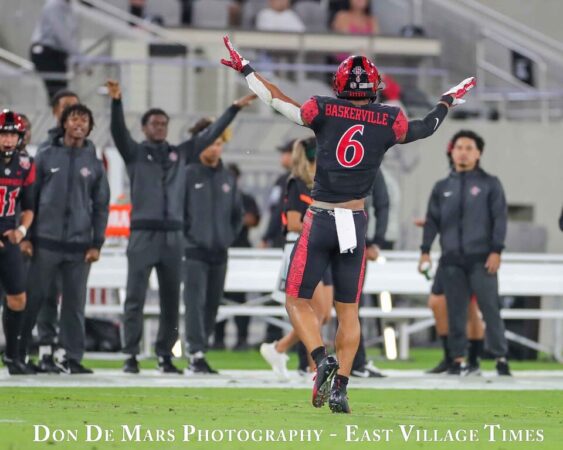
SDSU’s Class of 2021
SDSU’s 2021 recruiting class provides an illuminating case study. With the Covid pandemic raging, 2020 was a strange recruiting year, and SDSU came out of it well. According to 247 Sports, its recruiting average over the previous two seasons was 94th best overall in the country. With 26 high school players committed in 2021, the Aztecs jumped to 66th.
Ten of those 26 have left the program, but only two of the departures saw significant playing time. OL Josh Simmons started every game a year ago. S CJ Baskerville started 11 contests over two seasons. Given this experience, it is not surprising that Baskerville is the only transfer to date to get picked up by a team in a Power 5 conference. Texas Tech’s collective, The Matador Club, announced in July that every football player would receive $25,000 in exchange for community service projects.
While it is not known if money played a role in Baskerville’s transfer, multiple sources told EVT that a lack of NIL opportunities at SDSU influenced Simmons’ decision.
“We’re going to lose some other guys too,” Hoke said when asked about the impact NIL has on players transferring. “That’s going to happen. We all have to prepare for that. That’s why you have to be proactive with what you’re doing through the spring. I also think we have to keep recruiting the guys we have on the roster.”
If an injury occurs to Jalen Mayden this season and Kyle Crum, Liu Aumavae, or Javance Tupouata-Johnson excel in his place, what would a proven signal caller with three years of eligibility be worth on the open market? It is this question every coach from programs without a lucrative NIL program faces when playing freshmen.
“It’s now putting pressure on the programs to be good at something else,” Tolver told EVT this week. “It used to be okay just to be really good at football or to have a football school that had a really great education. But I think NIL is the new bully on the block. NIL has come in and said, ‘If you’re not also good at this or you’re not paying attention to it, you might struggle.’”
For years, MLB teams kept their best prospects in the minors to manipulate their service times and push free agency back. SDSU would be wise to find an equivalent if NIL does not pick up for its players.
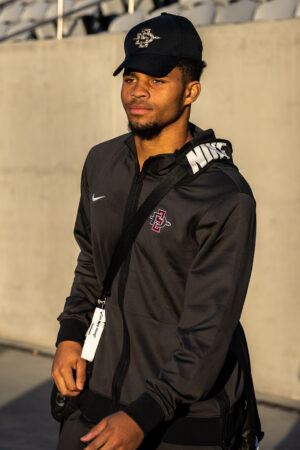
However valid their reasons, Baskerville and Simmons’ decisions hurt SDSU in 2023 and beyond. The NFL requires a player to wait three years to enter its league because it takes that long for an athlete to enter his athletic prime. Baskerville and Simmons took roster spots from players who would be entering the best part of their college careers. Their departures also took precious snaps away from those still on the roster, and neither was an irreplaceable presence when they played.
In Simmons’ case, the team endured huge growing pains last year. The silver lining to his penalty issues and other miscues was the experience he was gaining and how that would pay off in the coming years. That point is now moot.
Should SDSU have given Simmons’ snaps to Joey Wright, Dean Abdullah, or someone else on the roster? Hindsight is 20/20, but it is clear they should have. Would a three-star recruit without offers from the best schools in America have been a better choice for the Aztecs than the four-star local prospect? Again, the answer is yes.
Freshmen with obvious NFL futures can come in and immediately make a team better, but those players are signing NIL deals before leaving high school. The next tier of freshmen typically needs a few years to reach their potential. On the college level, upperclassmen without NFL ceilings are often better than underclassmen who go on to play in the league. Baskerville did not outshine a walk-on and a senior in 2022, but neither shares his future potential at the next level.
Development has been the name of the game for SDSU. Their recipe has been to find overlooked players who play with a chip on their shoulders and are ready to compete after a few years of seasoning. Without more NIL support from the community, there is no reason to deviate from that formula.
[wpedon id=”49075″ align=”right”]
SDSU at a Crossroads
The story of NIL at SDSU is not yet written, and unlike the past when no one connected with the Aztecs had control of SDSU’s ceiling, NIL gives fans and alumni a direct say in the kind of program SDSU becomes. America’s Finest City should be a premier recruiting destination, but limited NIL opportunities put a cap on the players the Aztecs can attract and, more importantly, keep. That consideration vanishes if Aztec Link thrives.
“Do the math,” Tolver replied when asked what SDSU needs in NIL commitments to be competitive. “If you have 100 kids in a program, the 80/20 rule will tell you that 20% of those kids are going to be NIL worthy in terms of the amount of value that they’re going to bring to the program. What I’ve been seeing is kids that are making anywhere from $20,000 or more in NIL money tend to be happy.”
SDSU football program, then, needs a minimum of $400,000 to $500,000 every year to attract and retain top talent like Baskerville and Simmons.
In many ways, NIL has only made legal what was already happening illegally. Donors have been buying players for decades and now do so out in the open. Around the country, the leading NIL programs got there because a few supporters seeded the venture with large investments to buy time for the schools’ collectives to build their donor base.
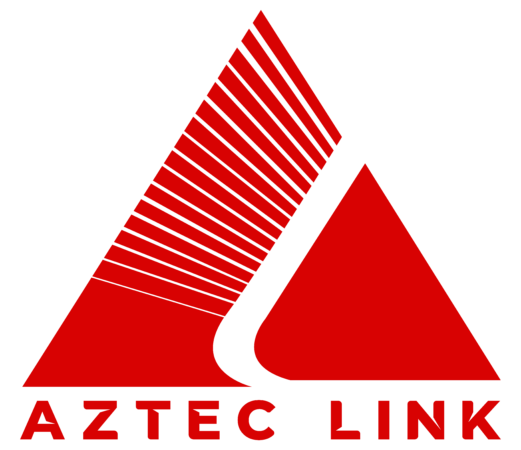
With Snapdragon complete, perhaps those with deeper pockets could turn their financial wherewithal in a new direction. Long term, though, reaching the fundraising goals will require a pool of small donors, large donors, and businesses.
“Getting fans involved at any level and really dispelling the myth that you’ve got to be willing to cut checks for hundreds of thousands or tens of thousands of dollars in order to make an impact,” Tolver explained. “It’s a volume thing. If you have 1,000 or 2,000 fans that are passionate about the program and are committed to it, who may be willing to part with a few hundred bucks a year or a couple thousand, you could make a big impact in the numbers that way. The biggest thing is building a community of people that understand this new game and that are willing to participate in it.”
Over the next few months, Aztec Link is planning to launch a membership that will provide exclusive content, events, and interactions with the players and coaches in the football program. For what Tolver described as a low monthly fee, fans and alumni will be able to directly support NIL at SDSU. The goal of the subscription is to bring as many “fans, donors, sponsors, and businesses” together so the Aztecs can be competitive in the new world of college athletics.
SDSU’s new conference affiliation will increase attention and investment in the program. Two years ago, these changes alone would have been enough to bring a new paradigm for Hoke and his staff to work. Today, that is no longer the case.
Their present task is to determine what is possible now and what can happen down the road. Should the NIL developments fail to net the desired results, the Aztecs will need to continue finding unconventional ways to compete. That will likely will not involve recruiting freshmen who can come in and play immediately.
Whatever the future holds, eight months in, it is clear NIL is the new Power Five.
My earliest sport’s memory involve tailgating at the Murph, running down the circular exit ramps, and seeing the Padres, Chargers and Aztecs play. As a second generation Aztec, I am passionate about all things SDSU. Other interests include raising my four children, being a great husband and teaching high school.
The idea of NIL was a disaster from the get-go. The moment college players took payment, they ceased to be amateurs. It was foolish to believe the battle over players would not devolve into a bidding war, leaving the smaller market schools at a serious disadvantage. Furthermore, allowing players to simply transfer after signing a letter of intent does a serious disservice to the university who recruited and funded their education and furthered their athletic future.
Yes, the combination of NIL and one-time transfer at the same time has created a lot of challenges. Cynically, the fact that NIL is outside of the schools is interesting. The schools don’t have to use their money to fund it.